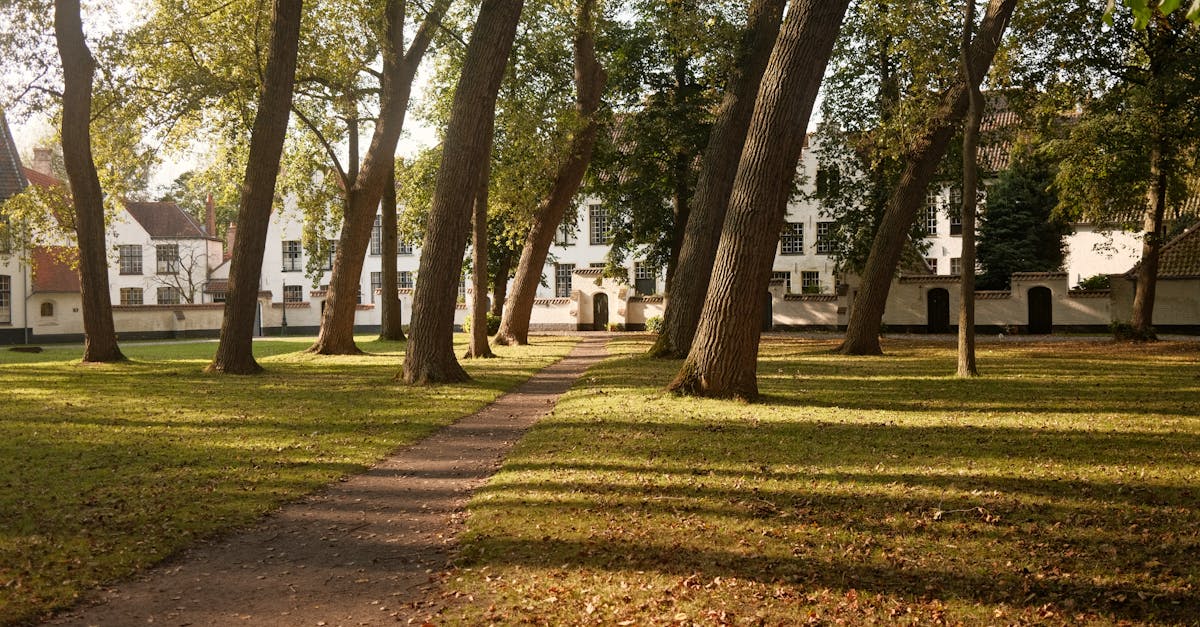THE beguinage is a concept rich in history, originally anchored in Northern Europe during the 13th century. This model of community life allowed women, called beguines, to lead a pious existence without completely withdrawing from the world. Starting from Christian initiatives to respond to social and economic needs, these institutions have formed spaces of female solidarity while respecting the values of freedom and evangelical poverty. The beguinage thus represents a striking example of the evolution of women’s roles in medieval society, combining tradition and aspiration for autonomy.
THE beguinage is a concept that emerged in the Middle Ages, representing a model of community life for women. Essentially, a beguinage designates a group of grouped housing units where beguines, single or widowed women, choose to live together in a pious setting without joining a traditional religious order. This form of life developed mainly in the Northern Europe, from 13th century.
The first communities of beguines appeared thanks to initiatives such as that of Saint Mary of Oignies in Liège. These pious institutions responded to a social need, providing refuge for women wishing to live an active religious life while remaining integrated into the world. The beguines’ law of life, although governed by spiritual precepts, did not require them to completely withdraw from worldly affairs, which allowed them to maintain a certain degree of independence.
What characterizes these communities? THE beguinage is generally made up of individual housing organized around a common space. This arrangement promotes collective life while respecting the autonomy of each member. Beguines were often engaged in works of charity, caring for the sick or educating children, becoming important figures of female solidarity.
At the beginning of 13th century, the economic and social context allowed the emergence of beguinages, supported by values of solidarity and of freedom. This movement allowed women to self-organize and create a network of mutual support. Although they share an ideal of evangelical poverty, the beguines do not live in total isolation, but rather in a framework which allows them to mingle spirituality and active life.
Beguinages developed especially in the Flemish regions. This formation of communities has been essential for many women, providing them not only with a roof over their heads, but also with some semblance of economic security. The rules that governed their lives focused on service to God and others, without requiring them to live in the strict asceticism of monasteries. THE neglects, men who supported these communities, also played a crucial role in providing protection and funding.
With time and the evolution of mentalities, the figure of the beguines has been rediscovered, highlighting their notable contribution to the history and evolution of women’s rights. Over the centuries, the beguinage has been able to adapt to social developments, while retaining its essence of mutual aid and sharing. Today, the beguinage is also mentioned in the context of housing for seniors, embodying the idea of community living while offering valuable mutual aid.
Ultimately, the beguinage represents an avant-garde model of solidarity and independence, rooted in history but always relevant. Throughout the ages, these communities have shown that women can come together to create a safe and spiritual living space, allowing each person to live in harmony with their values while facing the challenges of the outside world.

FAQ about the beguinage: history and definition
What is a beguinage? A beguinage is a living space where a community of women, called beguines, come together, who choose to live together while leading a secular religious life.
What is the origin of the beguinage? Beguinages emerged at the beginning of the 13th century, encouraged by particular economic, social, political and religious circumstances, notably in Liège, thanks to the initiative of Saint Marie d’Oignies.
Who were the beguines? Beguines were generally single or widowed women, who had taken a vow to serve God while remaining active in the world, without completely withdrawing from society.
What were the values held by the beguines? The beguine movement is based on values of solidarity, freedom and an ideal of evangelical poverty, recalling the principles of the mendicant orders of the time.
How were the beguinages organized? Beguinages consisted of individual housing grouped into communities, allowing beguines to live together while maintaining their personal independence.
What role does the beguinage play today? Nowadays, the concept of beguinage is rediscovered as a housing solution for seniors, promoting sharing, solidarity and a community lifestyle adapted to the needs of older people.











